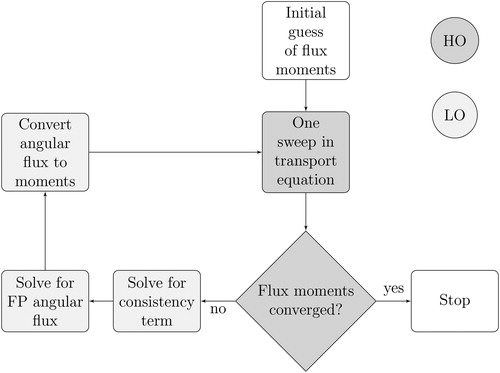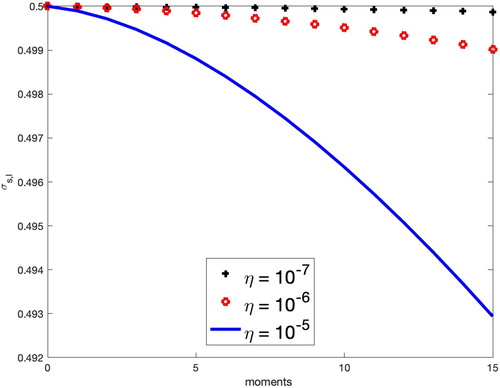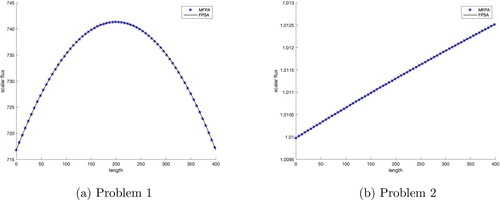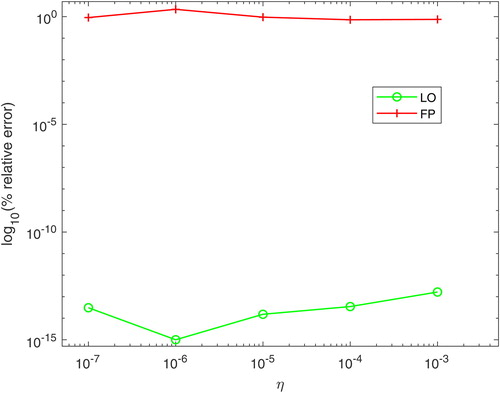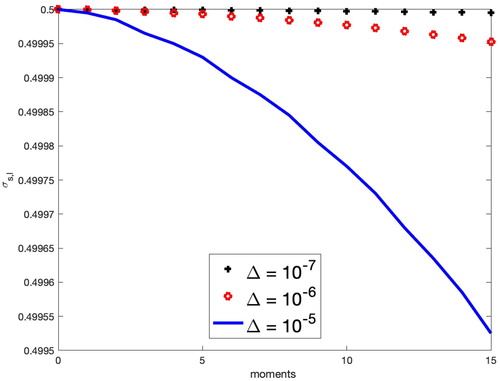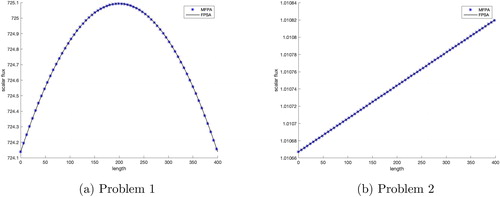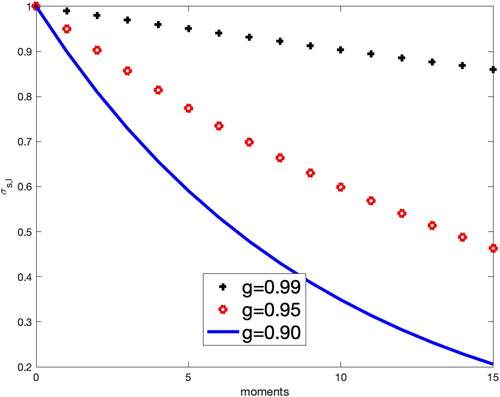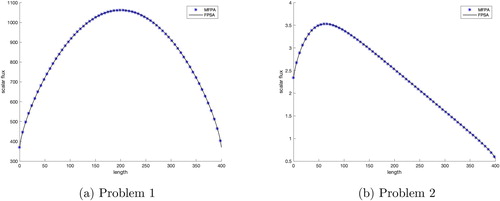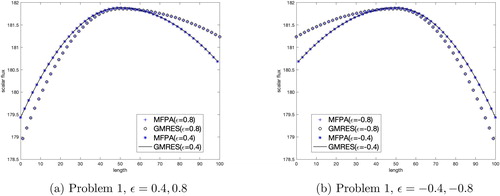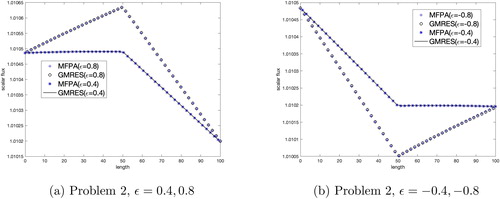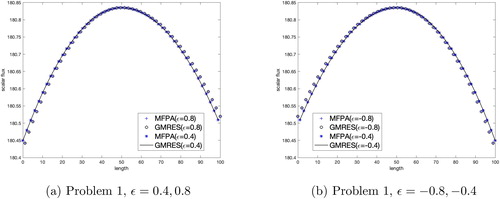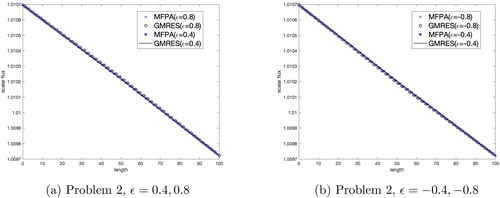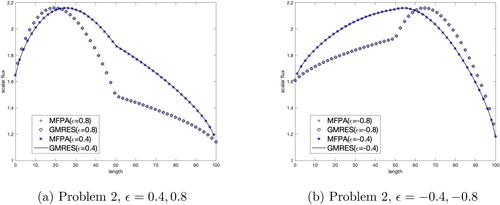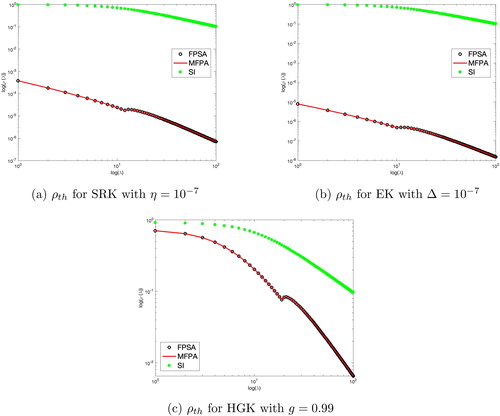Figures & data
Table 1. Problem parameters.
Table 2. Runtime and iteration counts for Problem 1 with SRK.
Table 3. Runtime and iteration counts for Problem 2 with SRK.
Table 4. Runtime and iteration counts for Problem 1 with SRK.
Table 5. Runtime and iteration counts for Problem 2 with SRK.
Table 6. Runtime and iteration counts for Problem 1 with EK.
Table 7. Runtime and iteration counts for Problem 2 with EK.
Table 8. Runtime and iteration counts for Problem 1 with EK.
Table 9. Runtime and iteration counts for Problem 2 with EK.
Table 10. Runtime and iteration counts for Problem 1 with HGK.
Table 11. Runtime and iteration counts for Problem 2 with HGK.
Table 12. Runtime and iteration counts for Problem 1 with HGK.
Table 13. Runtime and iteration counts for Problem 2 with HGK.
Table 14. Theoretical spectral radius results for MFPA.

